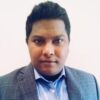
Posted on: April 20, 2020
Undeniable proof that you need Artificial Intelligence in Banking Fraud
The COVID-19 pandemic accelerated the shift to mobile banking across the globe.
Almost 33% of retail banking customers plan to grow their online and mobile banking services during and after COVID-19. In the latest MasterCard survey, 50% of the respondents are worried about the cleanliness of touchpads of signature, ATMs, and other devices. This pandemic has driven an increase in digital banking, along with a rise in account takeover fraud. 89% of banks’ digital fraud losses get initiated with account takeover.
Rule-Based method versus an Artificial Intelligence Approach:
Why We Need Artificial Intelligence for Fighting Payments Fraud:
Superfast – When it comes to fraud decisions, we need results fast! Research has shown that the longer a buyer’s journey takes, the less probable they are to complete checkout.
Scalable – Every online business wants to increase its transaction volume. With a rule-only system, growing amounts of payment and customer data put more pressure on the rules library to expand. But with machine learning, it is the opposite – the more data, the better.
Efficient and Cost-Effective – Machine learning does all the work of data analysis in much less time than it would take for even 50 fraud analysts. In contrast to humans, machines can perform repetitive, tedious tasks all day, all week, and need to send it to a human for decisions only when specific insight is necessary.
More accurate – Machine learning models can learn from patterns of normal behavior. They work at lightning speed to adapt to changes in that normal behavior and quickly identify patterns of fraud transactions.
2 ways How AI is Transforming the FinTech Industry:
Anomaly Detection: Identifying Suspicious Transactions
Machine Learning, collaborating with Artificial Intelligence, has developed an excellent anti-fraud approach for the customers, Anomaly Detection. In this case, the available data is split into two separate groups, normal distribution, and outliers. By outliers, we mean elements that deviate from the normal distribution and are labeled as fraudulent. The data that has been used here ranges from transaction details to unstructured text and images. This procedure, being simple and straightforward, provides binary answers and is helpful in many use cases. The most basic scenario would be that if the algorithm doubts a transaction to be faulty, the system will ask the user for some multi-step verification steps to obtain transparency.
Advanced Fraud Detection System: Associating Fraud Transactions with Existing Patterns
Advanced systems do not hold any boundary to finding anomalies. It has been found in many cases, supervised and unsupervised machine learning is used widely to detect any suspicious activity. These algorithms can identify existing patterns and hence can notice fraud scenarios. The algorithms can be used individually or in a merged form to build a refined model to recognize and prevent financial fraud.
Please email to hear more about us and how we can help your business?.





